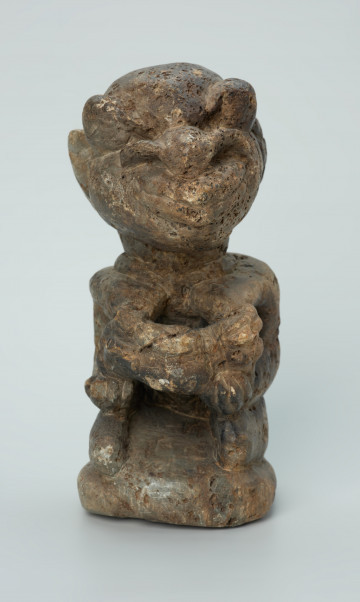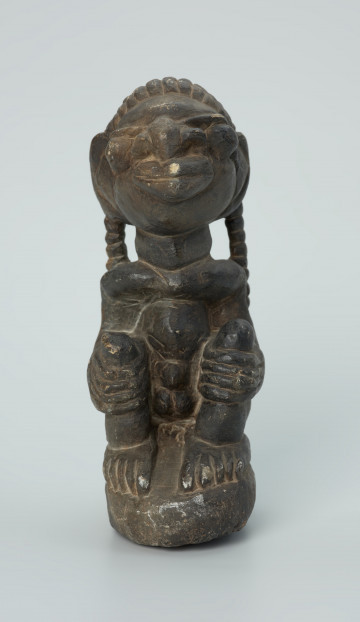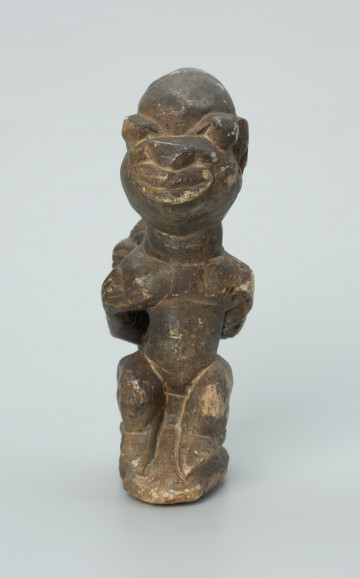
Figure of worship of forces of vegetation
1901 — 1971
National Museum in Szczecin
Part of the collection: Stone figurines from West Africa
The nomolisia (singular nomoli) statues of the Mende ethnic group found during agricultural work are mainly associated with agricultural magic and the cult of the vegetation forces. They are placed in the paddy fields, and offerings are made to them after a rich harvest. Their age is challenging to determine, although the researchers have noticed elements of Portuguese dress from the 16th century on some sculptures. The purpose of their creation and their ethnic group affiliation is also unclear.The nomoli sculpture on display shows a human figure with two faces, front and back, carved into it. Both are round and have stylised features: large, bulging eyes, broad noses with well-defined nostrils, and wide, slightly forward-looking lips that form a half-smile. According to the Africanist Kathy Curnow, the physical features of the figure described above, which consist mainly of exaggerated facial features and bulging eyes, are typical of nomolisia representations. However, not all researchers share her opinion. Christopher Fyfe and William Hart, in their article on stone sculptures from the coast of Upper Guinea, note that the characteristics given by the researcher can be found both among nomolisia figures and among twin pomda (singular pomdo) sculptures found by contemporary Guineans.
Katarzyna Findlik-Gawron
Author / creator
Dimensions
cały obiekt: height: 18,8 cm, width: 7,8 cm
Object type
figure
Creation time / dating
Creation / finding place
Identification number
Location / status

1901 — 1971
National Museum in Szczecin

1901 — 1971
National Museum in Szczecin

1901 — 1971
National Museum in Szczecin
DISCOVER this TOPIC
National Museum in Szczecin
DISCOVER this PATH
Educational path